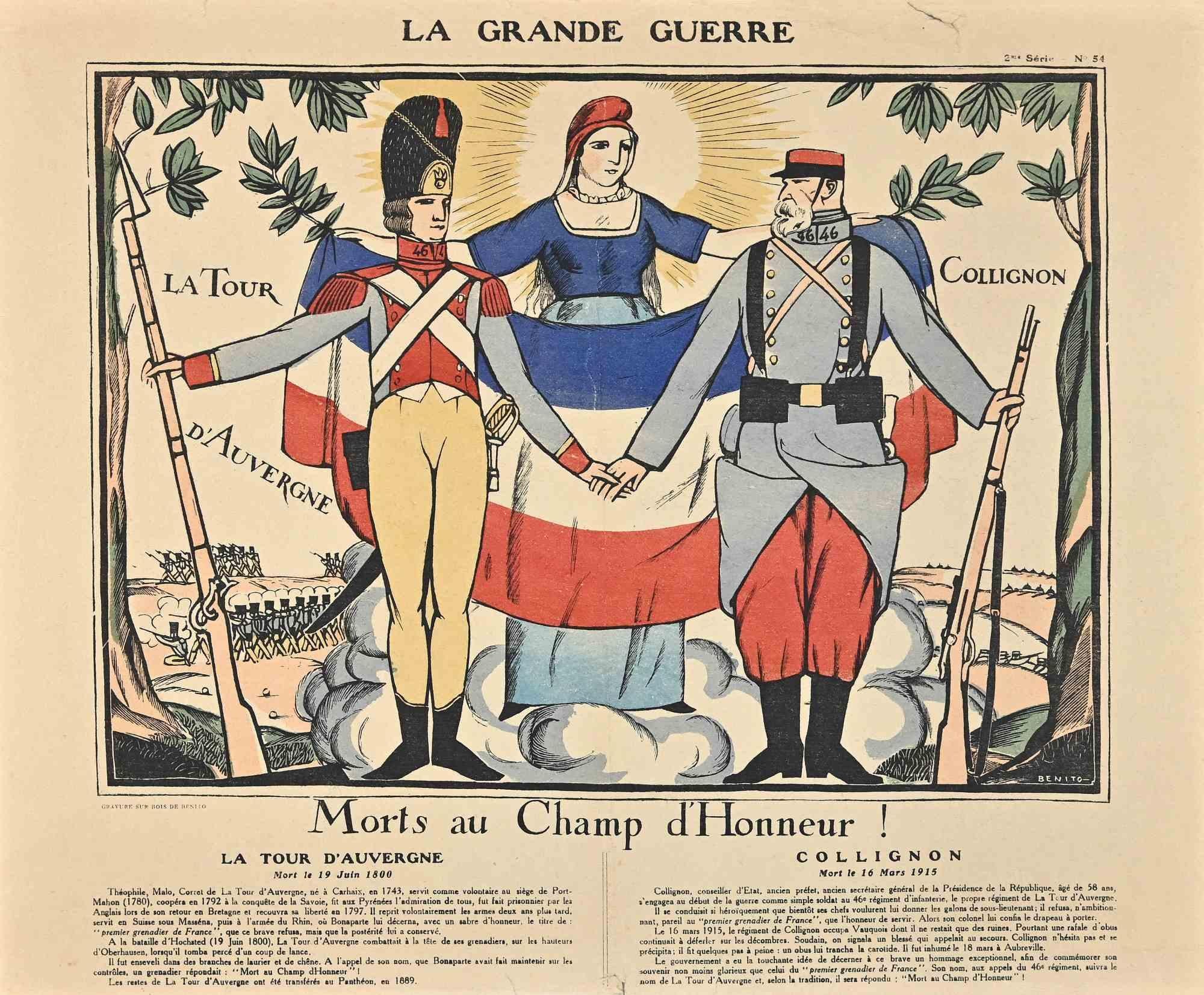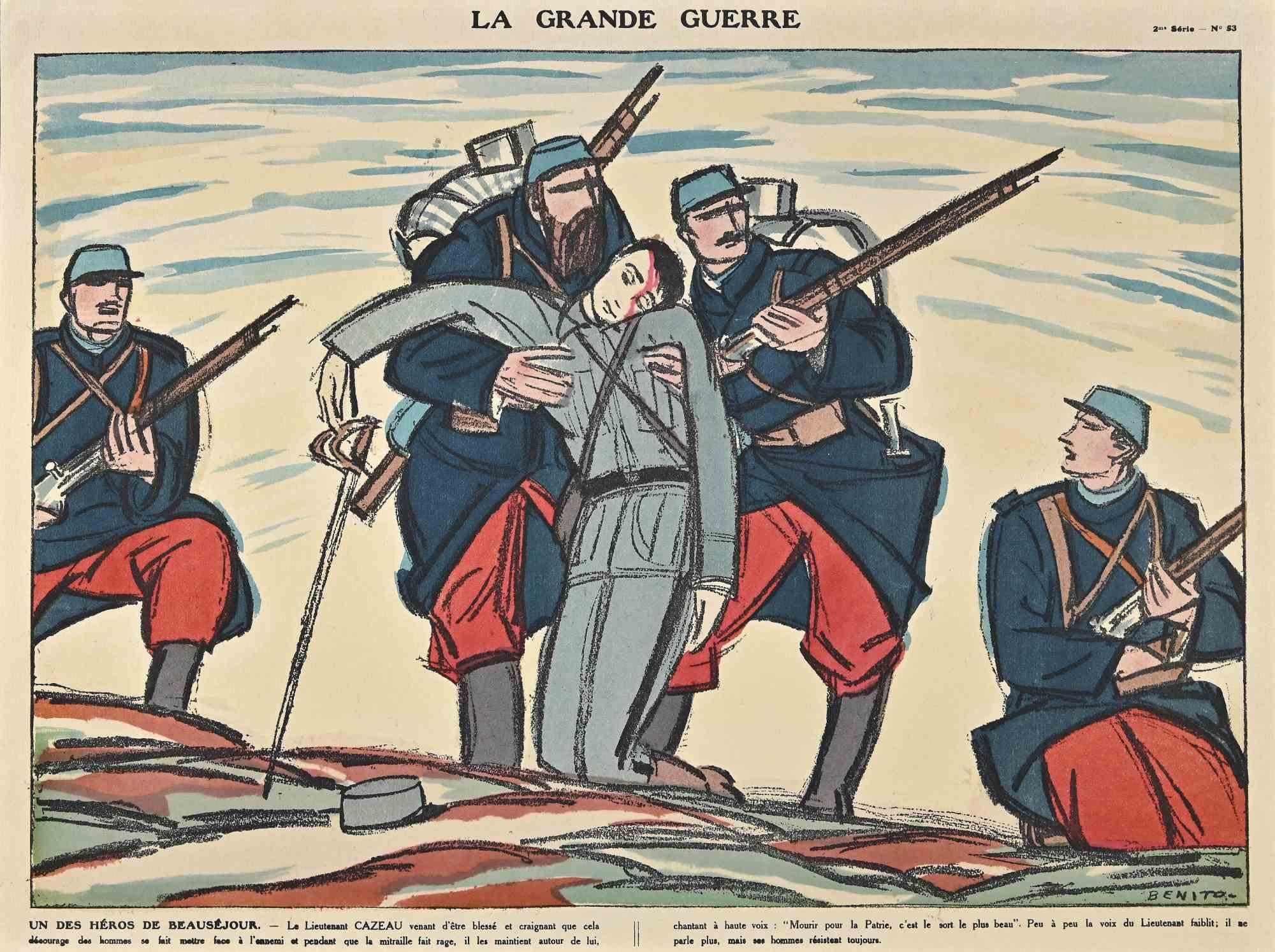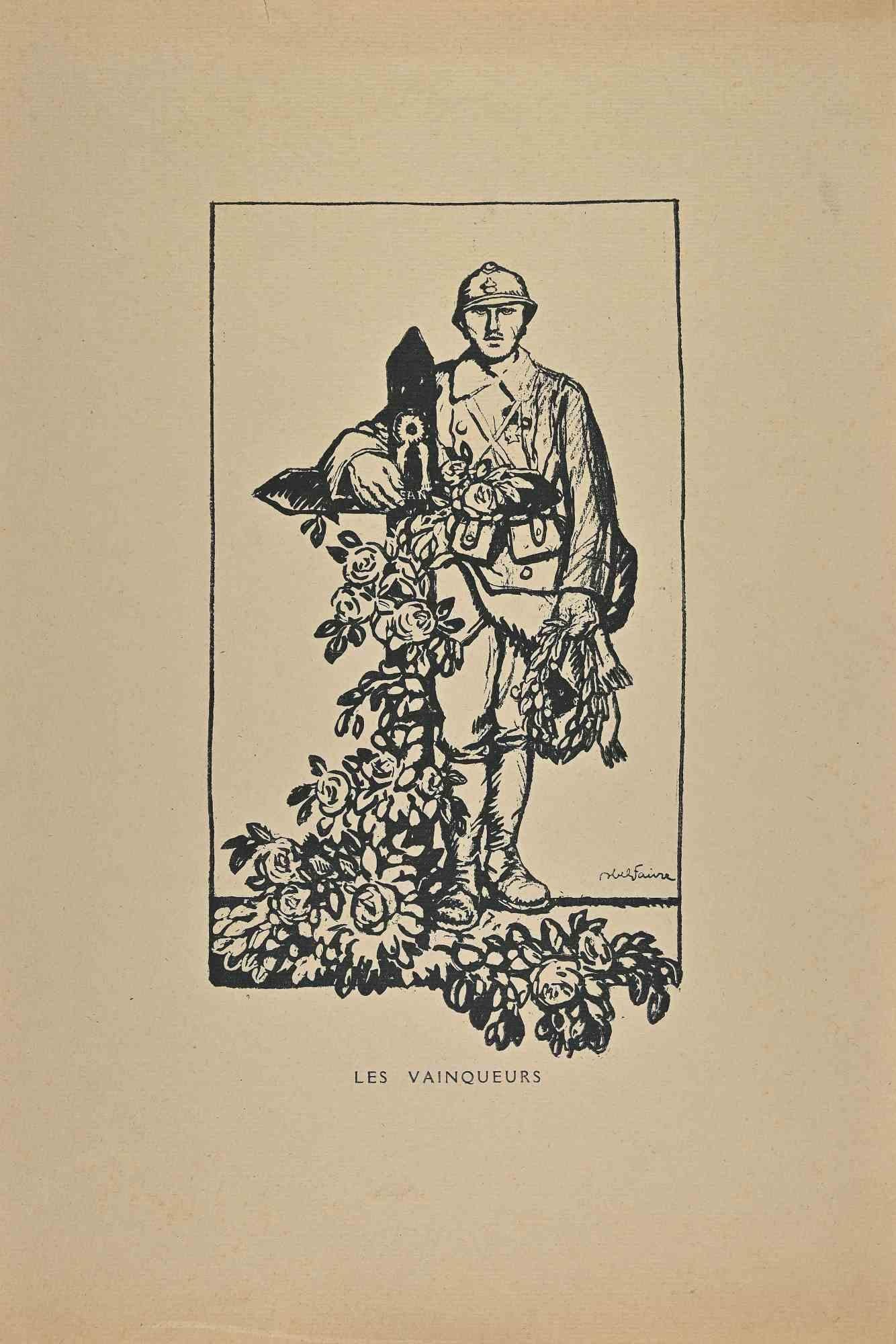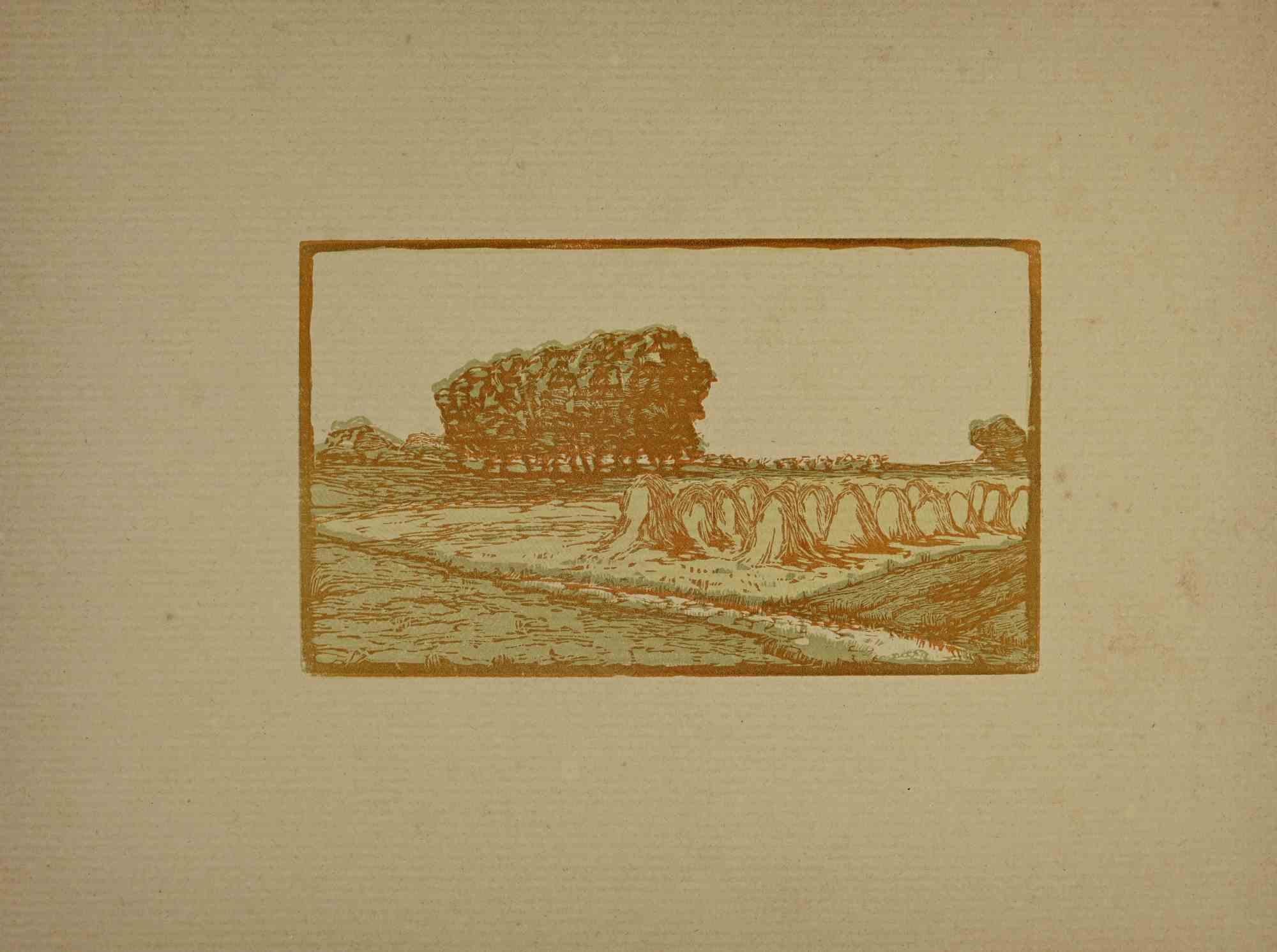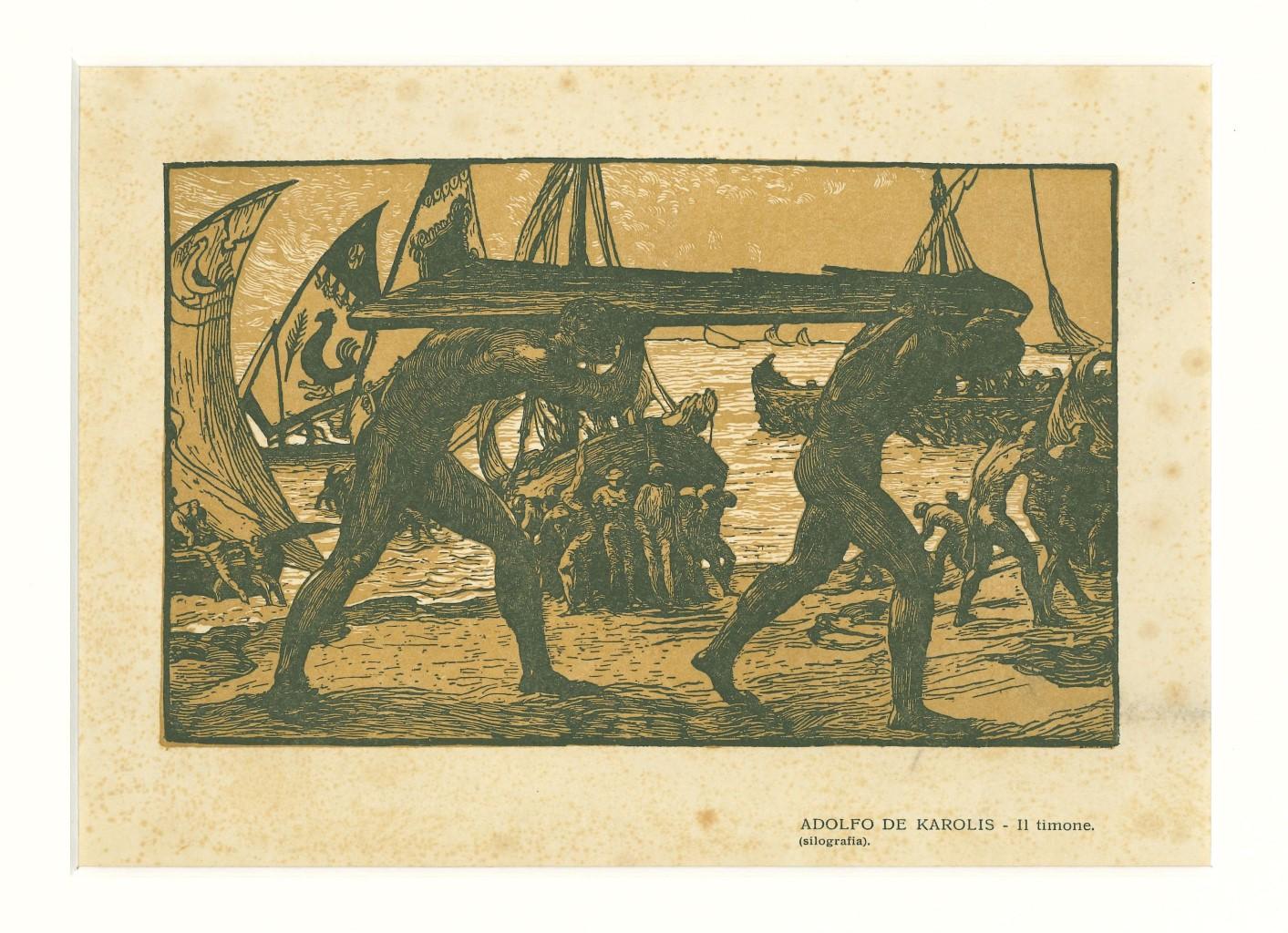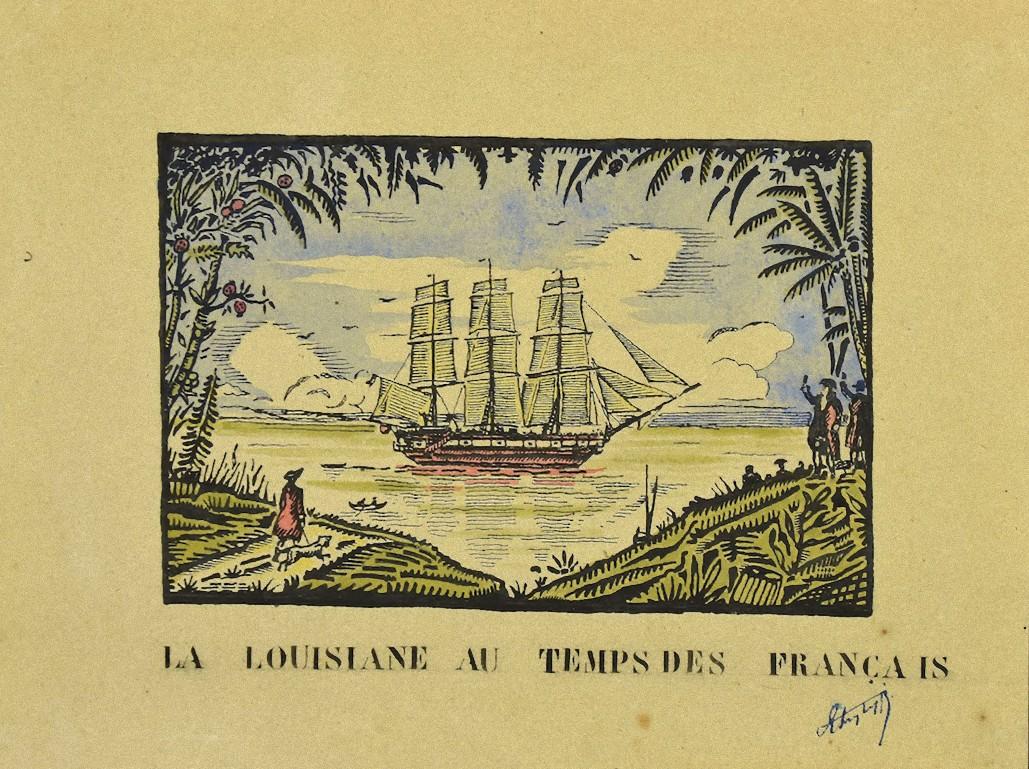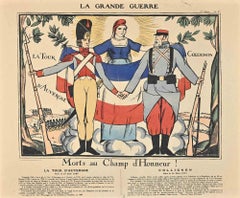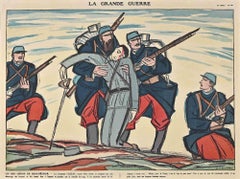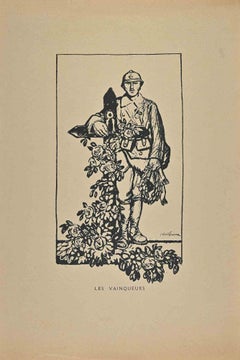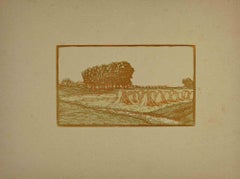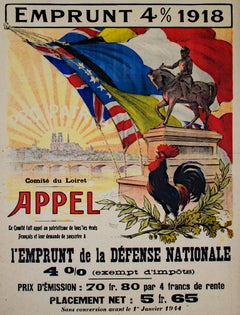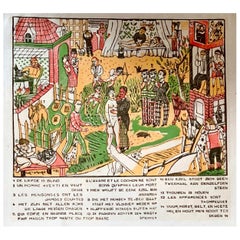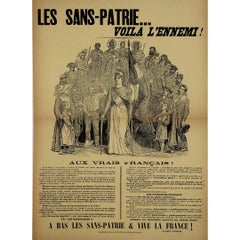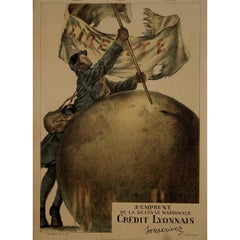Items Similar to Pour la Belle Terre de France - Woodcut realized by Benito - Early 20th Century
Want more images or videos?
Request additional images or videos from the seller
1 of 2
BenitoPour la Belle Terre de France - Woodcut realized by Benito - Early 20th CenturyEarly 20th Century
Early 20th Century
$479.67
£356.83
€400
CA$656.83
A$730.31
CHF 381.33
MX$8,889.66
NOK 4,865.58
SEK 4,558.81
DKK 3,044.98
Shipping
Retrieving quote...The 1stDibs Promise:
Authenticity Guarantee,
Money-Back Guarantee,
24-Hour Cancellation
About the Item
Pour la belle terre de France is an original Woodcut print by Benito (Edmond Garcia, 1891-1961) realized in the Early 20th Century.
Good condition.
Edition of 500, not numbered.
The artwork is depicted through strong strokes in a well-balanced composition.
- Creator:Benito
- Creation Year:Early 20th Century
- Dimensions:Height: 16.54 in (42 cm)Width: 12.21 in (31 cm)Depth: 0.4 in (1 cm)
- Medium:
- Movement & Style:
- Period:
- Condition:Insurance may be requested by customers as additional service, contact us for more information.
- Gallery Location:Roma, IT
- Reference Number:Seller: T-1306681stDibs: LU65039999482
About the Seller
4.9
Platinum Seller
Premium sellers with a 4.7+ rating and 24-hour response times
1stDibs seller since 2017
7,620 sales on 1stDibs
Typical response time: 3 hours
- ShippingRetrieving quote...Shipping from: Monaco, Monaco
- Return Policy
Authenticity Guarantee
In the unlikely event there’s an issue with an item’s authenticity, contact us within 1 year for a full refund. DetailsMoney-Back Guarantee
If your item is not as described, is damaged in transit, or does not arrive, contact us within 7 days for a full refund. Details24-Hour Cancellation
You have a 24-hour grace period in which to reconsider your purchase, with no questions asked.Vetted Professional Sellers
Our world-class sellers must adhere to strict standards for service and quality, maintaining the integrity of our listings.Price-Match Guarantee
If you find that a seller listed the same item for a lower price elsewhere, we’ll match it.Trusted Global Delivery
Our best-in-class carrier network provides specialized shipping options worldwide, including custom delivery.More From This Seller
View AllLa Grande Guerre - Woodcut Realized by Benito - Early 20th Century
Located in Roma, IT
La Grande Guerre is an original Woodcut by Benito (Edmond Garcia, 1891-1961) realized in the Early 20th Century.
Good condition.
The artwork is depicted through strong strokes in a...
Category
1930s Post-Impressionist More Art
Materials
Woodcut
La Grande Guerre - Woodcut Realized by Benito - Early 20th Century
Located in Roma, IT
La Grande Guerre is an original woodcut print by Benito (Edmond Garcia, 1891-1961) realized in the Early 20th Century.
Good condition.
The artwork is depicted through strong stroke...
Category
1930s Post-Impressionist More Art
Materials
Woodcut
The Winners - Original Woodcut by Abel Faivre - Mid 20th Century
Located in Roma, IT
The Winners is an original wood engraving artwork realized by French painter and illustrator Abel Faivre (Leone, March 30, 1867 – Nizza, August 30, 1945) in the early 20th Century.
...
Category
Mid-20th Century Modern Figurative Prints
Materials
Woodcut
French Countryside - Woodcut - Early 20th Century
Located in Roma, IT
French Countryside is a woodcut print realized by an artist in the 20th century.
Good condition.
Category
1970s Modern Figurative Prints
Materials
Woodcut
Il Timone - Woodcut by Adolfo De Karolis - Early 20th Century
Located in Roma, IT
Il Timone is an original woodcut on ivory-colored paper realized by Adolfo De Karolis.
The state of preservation is excellent.
Signed and titled, ...
Category
20th Century Art Nouveau Figurative Prints
Materials
Woodcut
La Louisiane au Temps des Français - Woodcut Print - Early 20th Century
Located in Roma, IT
La Louisiane au Temps des Français is a hand-colored woodcut print on creamy-colored paper.
In good conditions except for some minor foxing lower right.
Hand-signed, illegible.
T...
Category
Early 20th Century Modern Figurative Prints
Materials
Woodcut
You May Also Like
"Emprunt 4% 1918 - Appel, " Original Lithograph Poster by A. Malassinet
Located in Milwaukee, WI
"Emprunt 4% 1918 - Appel" is an original lithograph poster by A. Malassinet. This poster advertised a fund for the national defense during World War I. The following are two statemen...
Category
1910s Modern Landscape Prints
Materials
Lithograph
Modern Northern European Woodcut Print Flemish Proverbs ‘1934’ by Edgard Tytgat
Located in Brooklyn, NY
A woodcut in color on Japanese paper: "Flemish Proverbs," 1934. Signed and dated.
Tytgat's style can be described as a simplification of reality with an intended naivety. He deriv...
Category
Early 20th Century Prints
Materials
Paper
Early 20th-century french propaganda poster : The Stateless… Here is the Enemy!
Located in PARIS, FR
This early 20th-century propaganda poster, titled Les Sans-Patrie… Voilà l’Ennemi! (The Stateless… Here is the Enemy!), is a striking testament to the heated nationalist and anti-republican sentiments that surged in France in the years leading up to World War I. Created by E. Millo and published by Le Petit Patriote, the poster presents an impassioned defense of French patriotism while identifying internal enemies—those deemed to lack allegiance to the nation.
At the time of its creation, France was deeply divided between nationalists and republicans, between those who saw France as a Catholic, traditionalist nation and those who pushed for a secular, progressive Republic. The Dreyfus Affair (1894–1906) had left the country bitterly fractured, with intense debates over loyalty, national identity, and military values.
This poster embodies the sentiments of right-wing conservatives who viewed the Republic’s secularism, its tolerance of political opposition, and its social reforms as signs of national decay. The target of their ire was the so-called Sans-Patrie—those accused of betraying France by undermining its traditional values.
The poster’s dramatic black-and-white illustration is designed to evoke strong patriotic emotions. At its center stands a personification of France, likely inspired by Marianne, the symbolic female figure representing the French Republic. She holds a French flag and a sword, embodying strength and resistance against the perceived enemies of the nation.
Surrounding her are figures from different walks of life—workers, mothers, soldiers, and historical figures—suggesting that true French citizens stand together against those who would weaken the country.
The bold headline, “Les Sans-Patrie… Voilà l’Ennemi!”, leaves no room for ambiguity. It directly accuses those who lack national loyalty as traitors, rallying "true" French citizens to defend the homeland.
The text addresses “Aux Vrais Français” (To True French People), making a direct appeal to patriotic sentiment. It warns readers about anti-national forces, particularly socialists, internationalists, and secularists, who are accused of corrupting French youth, undermining the military, and weakening national unity.
Among its claims, the poster states that:
French schools are being used to indoctrinate children against patriotism.
Military service, a key element of national strength, is under attack by those who wish to weaken France.
The nation’s historical heroes and martyrs are being forgotten, replaced by values that do not serve the country’s survival.
The final rallying cry at the bottom, “À bas les sans-patrie & Vive la France...
Category
Early 1900s Prints and Multiples
Materials
Linen, Lithograph, Paper
1917 original poster by Abel Faivre - 3e Emprunt de la Défense Nationale
By Jules-Abel Faivre
Located in PARIS, FR
The 1917 original poster by Abel Faivre, titled “3e Emprunt de la Défense Nationale – Crédit Lyonnais – Liberté”, is a striking example of World War I propaganda, blending art with p...
Category
1910s Prints and Multiples
Materials
Lithograph, Paper
Circa 1915 French wartime propaganda original poster of World War I
Located in PARIS, FR
This circa 1915 French wartime propaganda poster is a striking example of World War I-era rationing efforts, emphasizing collective sacrifice and equitable distribution. Designed under the direction of the Comité de Prévoyance et d’Économies, this poster encouraged the French population to ration essential goods, particularly sugar, during the war.
At the heart of the artwork is a symbolic sugar loaf, partially cut by a saber, visually reinforcing the message of dividing resources fairly. The text reads:
"Avec la carte, nous en aurons peu – mais nous en aurons tous."
("With the ration card, we will have little – but we will all have some.")
This message aimed to instill a sense of national solidarity and compliance with rationing policies. The lower inscription, "Casse aujourd’hui ton sucre en deux pour en avoir demain?" ("Break your sugar in half today to have some tomorrow?"), serves as a direct appeal to personal responsibility in wartime resource management.
The bold yet simple color scheme (blue, red, black, and beige) gives the poster a striking visual identity, making it both an effective propaganda piece and a historically significant artifact.
This rare wartime poster is a powerful reminder of civilian resilience and the role of public cooperation in wartime economies. Due to its historical importance and striking design, it remains highly collectible, particularly among WWI memorabilia...
Category
1910s Prints and Multiples
Materials
Linen, Lithograph, Paper
1918 original poster by Adolphe Willette, for the Banque de l'Union Parisienne
By Adolphe Willette
Located in PARIS, FR
The 1918 original poster by Adolphe Willette, created for the Banque de l'Union Parisienne, is a compelling piece of wartime propaganda, urging citizens to contribute to the fourth national loan (4e Emprunt National). This poster, titled Pour que la France soit victorieuse comme à Valmy! (So that France may be victorious like at Valmy!), is a poignant call to action, blending historical reference with patriotic fervor to inspire public support during the final year of World War I.
Adolphe Willette, a prominent French painter, illustrator, and political cartoonist, was known for his evocative and often satirical works. During the war, artists like Willette played a crucial role in shaping public sentiment and encouraging national unity through their art. This particular poster exemplifies his ability to harness the power of visual storytelling to evoke a sense of duty and pride in the French populace.
The poster references the Battle of Valmy...
Category
1910s Prints and Multiples
Materials
Lithograph, Paper
More Ways To Browse
French Woodcut
20th Century French Woodcuts
Famous Abstract Art
Vintage The Who Poster
Paris Architecture Print
Portrait Of A Black Man
Miami Beach Art
Vintage Coastal Art
Mexican Photographs
Picasso Abstract Painting
California Scene Painting
Dancer Photos
Oil Painting Chinese
American Painting Gold Frame
Landscape Photography Of New York City
Photo Dance
Black Framed Antique Oil Paint
Original Advertising Art
